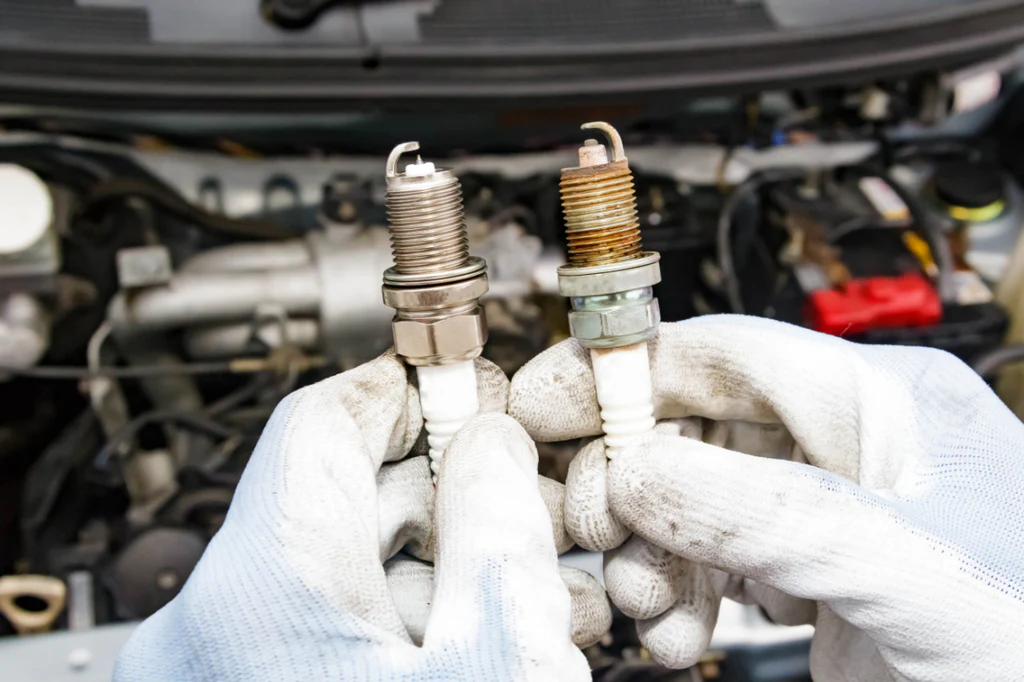When your car’s acceleration feels sluggish, it’s worth investigating the spark plugs. These often-overlooked components are key to maintaining engine performance. Proper maintenance ensures smooth operation and helps you avoid a range of issues. Let’s dive into what spark plugs do, why they wear out, and when to replace them.
Understanding the Spark Plug’s Job
Spark plugs ignite the air-fuel mixture in your engine, creating small explosions that move the pistons and power your vehicle. Each engine cylinder has its own spark plug. For instance, a four-cylinder engine has four spark plugs, while a six-cylinder engine uses six. Notably, diesel engines don’t require spark plugs.
At low speeds, such as 800 revolutions per minute (RPM), a spark plug in a four-cylinder engine fires about 200 times per minute. As engine speed increases, the demand on spark plugs rises proportionally. For example, at 2,000 RPM, each spark plug fires roughly 500 times per minute. Despite their durability, spark plugs eventually wear out and need replacement to maintain engine performance.

Why Spark Plugs Fail Over Time
Spark plugs endure significant wear and tear over their lifespan. Here are common reasons they fail:
Excess Heat: Overheating in the combustion chamber or issues with the cooling system can shorten spark plug life.
Residue Accumulation: Combustion residues can form deposits on the spark plug, reducing its efficiency.
Oil Contamination: Oil leaks into the combustion chamber may foul the plugs and signal underlying engine problems, such as damaged gaskets or seals.
When inspecting spark plugs, these signs indicate wear:
Cracks in the Insulator: A chipped or cracked ceramic casing can disrupt the electrical flow.
Eroded Electrodes: Worn or melted electrodes signal it’s time for a replacement.
Debris or Oil Deposits: While some carbon buildup can be cleaned, oil contamination often points to deeper issues.

Spotting the Need for Replacement
Replacing spark plugs is not a one-size-fits-all process. Vehicle make, model, and the type of spark plug determine replacement intervals. Consult your owner’s manual for guidance. While the age of the spark plug matters less, mileage serves as the best indicator for replacement. Symptoms, like reduced performance or difficulty starting, may indicate it’s time for new spark plugs.
Here’s how spark plug materials affect their lifespan:
- Copper: Affordable but short-lived, lasting 20,000 to 30,000 miles.
- Platinum: Durable and efficient, with a lifespan of up to 100,000 miles.
- Iridium: Known for longevity, these can exceed 100,000 miles.
Warning Signs of Faulty Spark Plugs
Be alert to these signs that your spark plugs or wires need attention:
Scheduled Check-Ups: Follow your car’s maintenance schedule. Replacement intervals can range from 18,000 miles to over 100,000 miles.
Aging Wires: In older vehicles, spark plug wires may become brittle and fail, disrupting the electrical flow to the plugs.
Fuel Efficiency Drops: Faulty spark plugs can cause a 20-30% decrease in fuel economy by burning fuel inefficiently.
Lagging Acceleration: Difficulty accelerating or reduced power often points to worn spark plugs, though other issues like dirty injectors or a bad oxygen sensor could also be responsible.
Unsteady Idling: Strange noises, vibrations, or erratic idling might signal spark plug problems.
Misfiring Engine: Engine misfires occur when the air-fuel mixture fails to ignite properly, which can damage the catalytic converter if ignored.
Starting Troubles: A car that struggles to start may have spark plugs that can no longer generate a strong spark.
Dashboard Alerts: A “Check Engine” light often points to ignition system issues, including spark plugs or wires. If the light flashes, seek immediate help to avoid costly repairs.
Replacement Costs and Considerations
The cost of replacing spark plugs depends on the type and brand. Copper plugs are inexpensive but have shorter lifespans, while platinum and iridium options are pricier but more durable. Professional replacement includes labor costs, which vary by vehicle design and the number of plugs required.
Choosing the Right Spark Plug
Different engines require specific spark plugs. Here’s a breakdown of common types:
Copper Plugs: Budget-friendly but require frequent replacement, best for older vehicles.
Platinum Plugs: Longer-lasting and resistant to carbon buildup, ideal for modern cars.
Double Platinum Plugs: Designed for engines with wasted spark systems, these endure additional wear.
Iridium Plugs: The most durable option, offering exceptional longevity and performance.
Silver Plugs: Rare and typically used in older European cars or motorcycles.
Tips for Maintaining Spark Plugs
To extend spark plug life and maintain engine performance, follow these steps:
- Adhere to your car’s maintenance schedule.
- Address engine issues like oil leaks or overheating promptly.
- Have a mechanic check and adjust spark plug gaps during routine maintenance.
Spark plugs are a crucial yet often overlooked part of your engine’s operation. They ensure efficient combustion and play a significant role in fuel economy and performance. Regular maintenance and timely replacement of spark plugs help you avoid costly repairs and keep your vehicle running smoothly. By recognizing the signs of wear and understanding your vehicle’s needs, you can keep your car in top condition for years to come.

